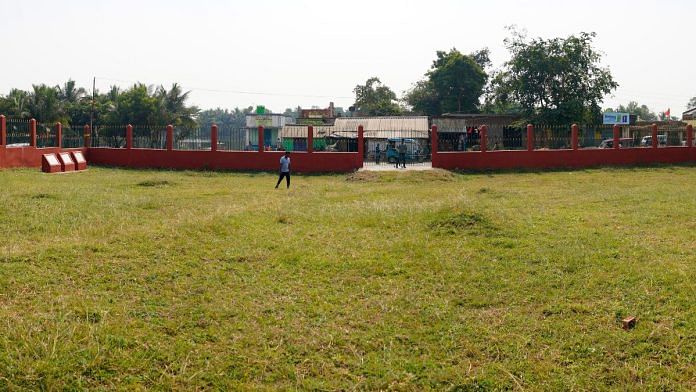The conversations around the proto-historic period – from the 3rd to the 2nd millennium BCE – are usually shadowed by urban settlements of the Bronze Age Harappan Civilisation. The metropolises of Harappa, Mohenjodaro, Dholavira and Rakhigarhi remain the focal point of conversations about the ancient India that existed before the 6th century BCE. The Harappan Civilisation and its intricacies, which go beyond urbanisation, are often ignored along with the rest of the subcontinent.
It is casually assumed by scholars and non-academics that the rest of the subcontinent had nothing but small, insignificant hamlets that played no role in the emergence of culture. The case studies of Maski, Brahmagiri and Chirand largely focused on spelling out the presence of contemporary settlements in southern and eastern India, which also showcased the continuity of occupation and changes in culture.
However, three sites are not enough to narrate the story of proto-historic India. It is imperative to recognise that the eastern half of the subcontinent is always absent in conversations about the Bronze/Copper Age. Where Chirand reflects the Neo-Chalcolithic period (the merging of Neolithic and Chalcolithic traits) in the Ganga valley, the site of Pandu Rajar Dhibi highlights the existence of a strong Chalcolithic/Copper Age in the East, placing Bengal on the proto-historic map of India.
Copper Age of the East
Located on the banks of the Ajay River in West Bengal’s Burdwan district, Pandu Rajar Dhibi revealed, for the first time in eastern India, the evidence of a proto-historic civilisation dating back to the 2nd millennium BCE. The site’s potential was recognised in 1961 when archaeologists DK Chakrabarti and SC Mukherjee explored the area and reported microliths, black and red pottery, fragments of lustrous red ware and a spouted bowl along with semi-precious beads and some bits of copper. Most antiquities were of proto-historic origin, but indicated that the site had been occupied for a long time.
The site was subjected to extensive excavation from 1962 to 1965 by Paresh Chandra Das Gupta of the Directorate of Archaeology, West Bengal. It was excavated for multiple seasons after 1965 as well. Exploration around the area and the excavation revealed a four-period occupation, the earliest of which goes as far back as the 2nd millennium BCE.
The excavation also revealed that early inhabitants appeared to be simple agriculturalists who lived in mud houses. The ceramic industry of the early occupants is interesting as it included black and red ware, black burnished ware, hand-made greyish or pale red pottery, and lustrous red ware. The excavator Das Gupta found an uncanny similarity between the ceramic industry in Narmada Valley and the one in Rajasthan, thus linking the West to the East. The excavator also pushed the influence of maritime trade in material remains at the site in the 2nd millennium BCE.
Furthermore, evidence indicated a smooth transition from millet to rice. When studied, potsherds with paddy-husk impressions showed the presence of rice (Oryza Sativa L Gramineae) in the proto-historic period. This evidence facilitated the understanding of paddy gradually substituting millet.
Lime or gypsum-plastered floors, spacious rooms, and halls with curved pavements made with beaten terracotta nodules and featuring post-holes point to a sophisticated settlement pattern with hints of urban traits.
The Chalcolithic Age at the site continued to yield the above-mentioned ceramics and microliths along with copper objects like bangles, rings, fish hooks, and needles. This period slowly transitioned to the Iron Age, which yielded similar material assemblage along with the addition of Iron implements and objects like points, blades and iron swords with hilt and polished celts – all part of the Neolithic tool set.
The foundation of brick structures in successive periods, along with thick storage vases and Northern Black Polished Ware showcased the rise of the early historic periodat Pandu Rajar Dhibi.
Human burials were also a common practice in the area. Extended, flexed, and secondary burials were discovered during the excavations, which the excavator compared to the burial practices of Central India and the Deccan.
Also read: Bihar’s Chirand has a 4000-year history. It’s the ‘rising sun’ of India’s Neolithic culture
Beyond Pandu Rajar Dhibi
The work undertaken in the 1960s and 1970s was commendable but based heavily on a limited understanding of Copper Age India. The constant focus on drawing parallels between the Far West and the excavated sites overshadowed the findings. They failed to understand the indigenous /regional imprints in the material culture. As seen in the cases of Chirand, Maski or even Burzahom, there are some aspects of the settlements that grew from local influences and then changed with time due to external influences. It is also a fact that most of the excavations conducted in the 1960s and 1970s followed this line of investigation. Therefore, fresh investigations are needed in this area of eastern India.
The area surrounding Pandu Rajar Dhibi is conducive to fresh archaeological surveys. For instance, the work undertaken by Rajat Sanyal and his colleagues in the Mayureswar, Rampurhat, Nalhati and Murarai regions of Birbhum district in 2017-18 added multiple sites to the existing data (Sanyal et al 2018).
The important site of Pandu Rajar Dhibi can help us understand the Chalcolithic/Copper Age in India. The extent of artefacts and ceramic traditions like Black and Red Ware indicate both external and internal influences, possibly facilitated by maritime trade routes. This knowledge can help eliminate the vacuum we’ve created. The evidence points to the possibility of a maritime history in the East as it was in the West—likely due to the influence of Harappan traders—as early as the 2nd millennium BCE. This only emphasises the need for more thorough research.
Disha Ahluwalia is an archaeologist and junior research fellow at the Indian Council Of Historical Research. She tweets @ahluwaliadisha. Views are personal.
(Edited by Zoya Bhatti)



